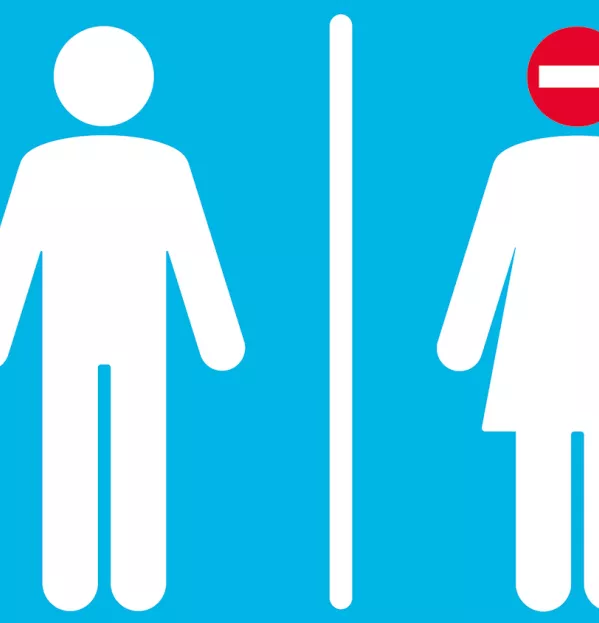‘Whatever a trans pupil says they need to feel safe, just do it’

In the run-up to LGBT History Month in February this year, I found myself reflecting on my own personal history of being a feminine-identifying trans person. I have done a lot of hard work in the past two years to get to a point where I am comfortable in myself, and able to be confident and out publicly in society - a luxury for most trans people.
I look back to 2015. This was the year that I became aware of my trans identity, and I subsequently came out.
My final year in high school was 2015-16. I was stressing over the expectation to perform well - a stress that I put on myself and that was put on me by my teachers. I was also stressing because I knew I needed to come out before I started university. I wanted to begin the next chapter of education, and the first chapter of my adult life, undisguised.
That took a lot of courage. Many trans people don’t have the level of support that I received to help me come out at school. My family were, and are, amazing, and I also had my local LGBT Youth Scotland support group (for lesbian, gay, bisexual and transgender young people).
However, it still took a large effort to be comfortable going to school as Emily. It felt a lot like a negotiation process rather than acceptance of my identity and support for me coming out.
I suffered through half a dozen 20-minute meetings with various members of senior management to negotiate the terms of my coming out. At least half that time was spent with my providing a basic education about trans identities - something I shouldn’t have had to do. You can imagine how difficult it was trying to discuss something with people who had little clue about the issues that I would likely face as a trans student.
One thing that is synonymous with the rights of transgender people is the bathroom debate; my situation was no different. I was not allowed to use the female toilets. The main concern from staff in that respect was that there could be a massive backlash from the parents of other students.
Teachers and support staff are supposed to care for each student individually, but they seemed to care more about the school’s image than my wellbeing and safety from transphobic bullying, hate and discrimination. It was a case of being forced to compromise so that the majority wouldn’t get upset, and that isn’t fair.
In the end, I was relegated to a single toilet on the second floor of the main building. Granted, it was a women’s toilet (at least they got that right) but it was part of the staff set of bathrooms. Don’t get me wrong, it was nice not to have to pee with other students, but that kind of “special treatment” is wholly unnecessary. Just let trans people use the bathroom that corresponds to their gender.
Thankfully, I had the support of the local youth worker from LGBT Youth Scotland, who helped me a great deal and will be someone I forever feel indebted to. However, I shouldn’t have needed a whole defence team of youth workers and guidance teachers to help to negotiate the terms of my coming out.
Once I was, for all intents and purposes, “allowed” to come out, I went through the wringer of being tokenised as the one trans person in the school. It put me in the position where I was responsible for the education of school staff - that shouldn’t be happening. To summarise, then, what should you, as staff of educational institutions, be doing to help trans students when they come out?
First, use your own initiative: have plans in place so that when a trans student wishes to come out, they can do so safely, and with the respect and dignity they deserve. Focus on the young person you’re dealing with. Being centred on the individual is key to creating the most supportive environment.
Have practices in place that assist in the prevention of transphobic bullying. You can start by correctly disciplining bullying and being clear that it won’t be tolerated. And provide comprehensive and meaningful education around LGBT identities: by ensuring that students and staff understand what the acronym stands for and have a clear knowledge of what being trans means, a safe and secure environment can be created for trans students.
Finally, and this is the most important one: listen. Every trans student will have a greater understanding of their own identity than you ever could, so make sure that their wishes are heard and taken into account. If they want their name and gender changed on the register, do it. (I know this can be done on the education management information system Seemis, so don’t try to use that as an excuse!) If they want to use a different bathroom from the one they have been using, let them.
Whatever a trans person says they need to feel safe, just do it. I would have had a much better time in school if I had been listened to more.
Emily Frood is a film and media student at Queen Margaret University, Edinburgh, and co-convener of the committee for Beyond Gender, a transgender youth support group in the city
You need a Tes subscription to read this article
Subscribe now to read this article and get other subscriber-only content:
- Unlimited access to all Tes magazine content
- Exclusive subscriber-only stories
- Award-winning email newsletters
Already a subscriber? Log in
You need a subscription to read this article
Subscribe now to read this article and get other subscriber-only content, including:
- Unlimited access to all Tes magazine content
- Exclusive subscriber-only stories
- Award-winning email newsletters